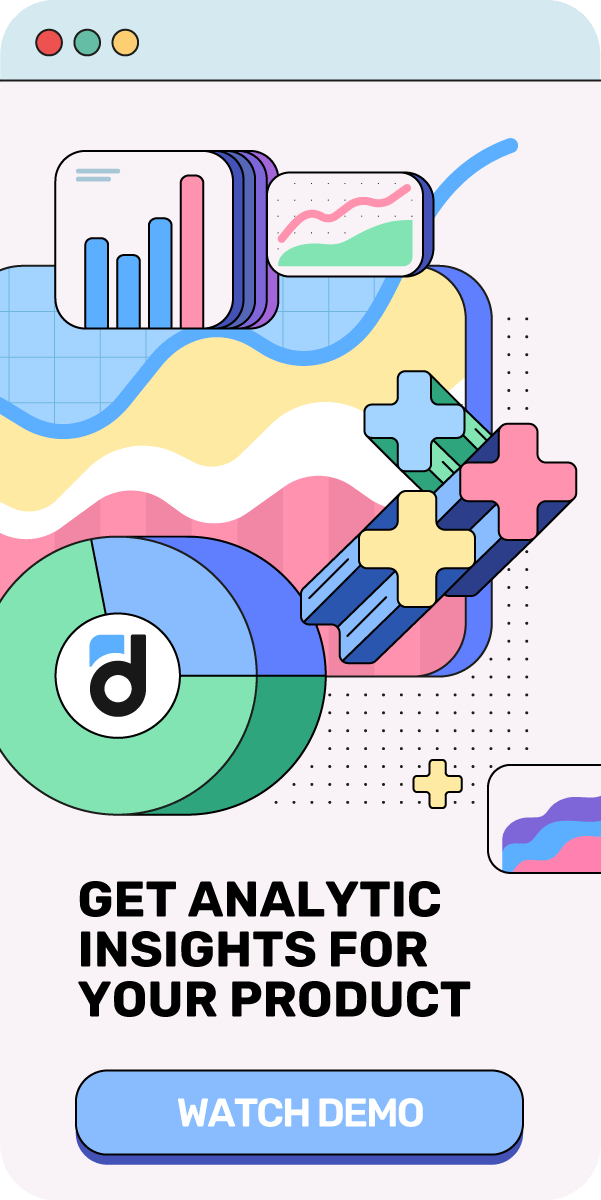This article is finishing our series of "How to analyze paying users’'. Previous parts focused on RFM analysis, whales and dolphins and structure of the revenue by time.
Today we are going to talk about repeat payments and about the time of conversion into payment. What questions should you ask on this point?
On what day user make the first purchase? What about the second? The third?
Understanding of user payment behavior will allow you to better plan monetization of your product. This is the usage of the traditional product analytics algorithm:
- Identify the pattern of user behavior;
- Find the users whose behavior initially corresponds to this pattern;
- Offer these users to take next action from the pattern. For you, it looks like a logical continuation of the pattern, and for the user — as a targeted offer at the right time.
Knowing when the user makes the next payment, you can get ahead of it and offer the desired campaign (or targeted offer) at the right time.
Read more: Main Metrics. Paying Users
For example, let’s use the ‘Period until payments” report by devtodev. Choose the first payment moment (you can also choose the second, the third or all payments, regardless of the serial number), set the period of users registration, and look at the distribution of time of their first payment.
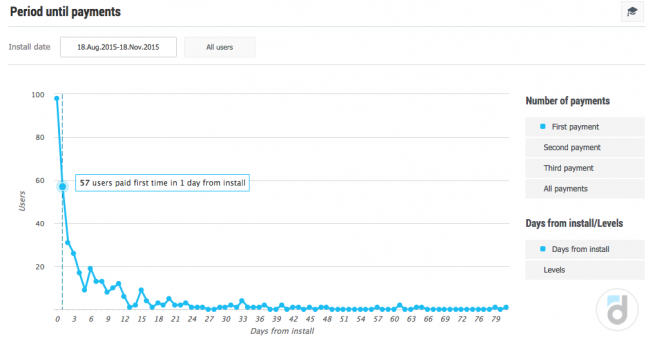
We see that the bulk of the first payments is made in the first days, even at the day of registration. This means that we can safely propose any campaign from the very beginning of user's staying in the app, even from the first day.
But offering to buy something, for example, immediately after tutorial, would not be quite right because the user decides that the game is based only on donations and, quite likely can decide to leave the application. This is why we ask ourselves the following questions:
At what level the user makes the first purchase? And the second? And the third?
Again, we turn to the "Period until payments" report and choose the distribution not by days, but by levels.
Read more: How to Integrate an Analytics System into your Game
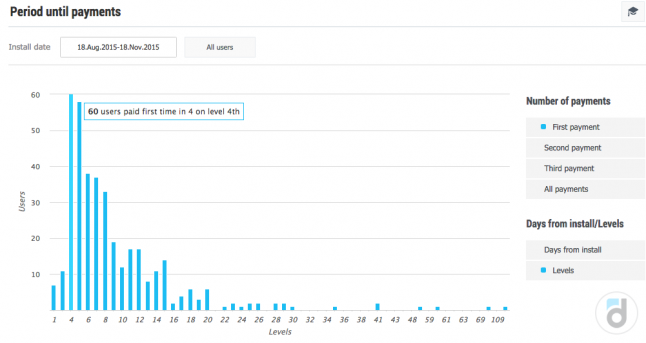
Aha! Here is the peak in the fourth and fifth levels.
Thus, we have identified a pattern: paying users primarily make the first purchase on the day of registration at the achievement of levels 4-5. In the future, we will be able to build into the project a targeted offer corresponding to this pattern. And it will help us to increase conversion into purchase on the first day.
How many users make one payment? How many users make repeat payments? How are the sums distributed between the first and repeat payments?
Let's begin with a little advice: par with metrics Paying Users (amount of paying users) and Paying Share (proportion of paying users among the active audience) pay attention to New Paying Users metric, that shows the number of users that made their first payment during the period analyzed. Without the first payment, there would be no repeat ones.
Speaking about the importance of repeat payments. Not so long, Tapjoy reviewed the applications that made a million dollars and identified a few common signs. The first sign is that 84% of applications in which at least 1,000 users made at least three payments during the first 90 days from the date of the first entry, overcame the barrier of $1 million.
Read more: How to Analyze App and Game Subscriptions
To help you understand the distribution of paying users by the number of their payments, we developed the "Users by transactions" report. It demonstrates how many users made one transaction, two transactions and so on.
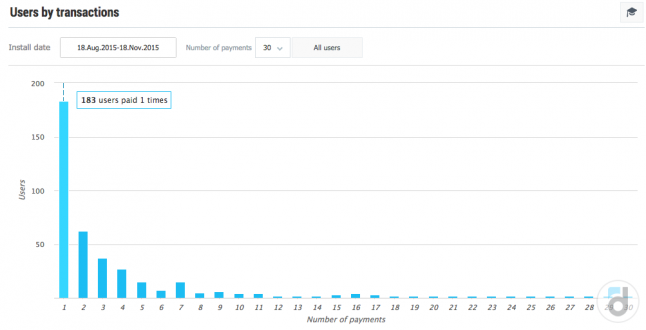
The second sign from Tapjoy shows that if at least 35% of users made the first payment, and then made the second and the third payments, then the application is likely to make a million dollars.
The first payment is usually small in size. You may see this in the report "Paying users activity":
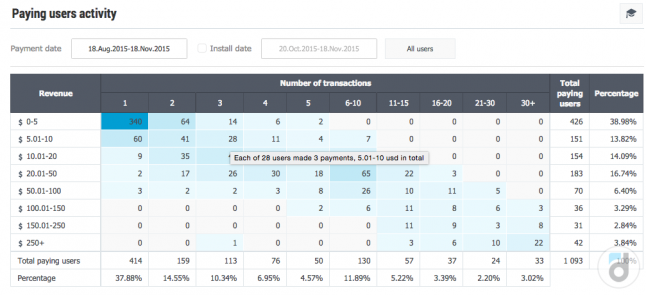
Users who make their first payment usually just want to test the paid benefits of your product and are not ready to spend large sums. In addition, the first payment is also a reason to link the card to the account, if it wasn't previously linked. But the main monetary weight is contained in the repeat payments.
So, to have financial success, your product must meet the following conditions:
- The user should come to making the first payment by himself, however, you may help him by revealing the pattern and making an offer at the right time.
- Do not require a large first payment from the user. The first payment is usually small in size.
- The user should feel the return on investment, then they would be pleased with the first purchase and willing to pay more.
- Your product should allow the user to pay as much as they want. Each user, whether they are a non-paying or a whale (the user with the highest check) must enjoy the use of your product.
- Long-term retention is the key to a good monetization. If the user is non-paying, the longer they are with you, the higher the probability of the payment is. If the user is paying, the longer they are with you, the more they might pay.
At this, series of articles on the analysis of paying users is completed. Analyze the behavior of those who are paying you, understand where your money comes from and increase your cash flow.











































































































































































































































































































































